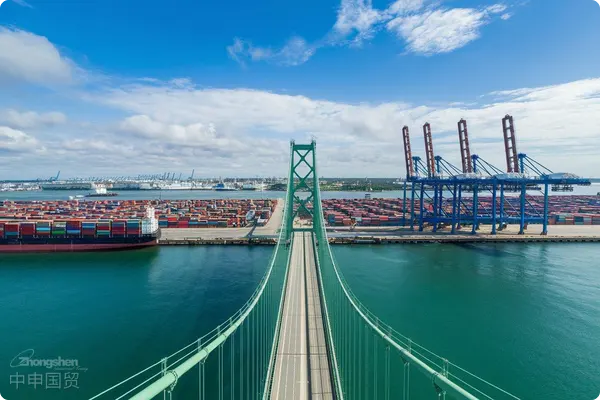- Shanghai Zhongshen International Trade Co., Ltd. - Two decades of trade agency expertise.
- Service Hotline: 139 1787 2118

Contents
ToggleThe "policy dividends" of bonded zone imports and their compatibility with electromechanical equipment
In 2025, the General Administration of Customs will implement theValue-added Tax (VAT) Tiered Management Policy, making bonded zone imports a strategic choice for electromechanical equipment enterprises. Data shows that the electromechanicalEquipment ImportsIn the business, precision instrument products account for 63%, among which high-value categories such as semiconductor manufacturing equipment and industrial robots generally adopt a batch-by-batch write-off model.
The Four Golden Criteria for Selecting an Agency Service Provider
- Qualification verification system
- AEO (Authorized Economic Operator) Advanced Certification qualification from customs
- Record of Handling Automatic Import Licenses for Mechanical and Electrical Products
- Experience in handling CCC certification for specific equipment
- Customs clearance time guarantee
- Standard Customs Clearance Time Commitment Letter (Recommended to require a 48-hour commitment)
- Emergency Customs Clearance Plan (Including Holiday Clearance Channel)
- Technical document processing capability
- EU CE Certification Document Conversion Capability
- Standard Template for Chinese-English Comparison of Equipment Parameters
- Risk prevention and control mechanisms
- Preliminary Review System for Classification Disputes
- It is recommended to verify through the following methods:Transparent verification system
Illustrated Flowchart of Customs Clearance Practical Operations for 2025
Taking the import of an industrial laser cutting machine as an example:
- Phase 1: Preliminary Access Assessment (15 working days)
- HS Code Pre-classification (3D drawings of the equipment required)
- Pre-shipment Inspection Registration for Used Equipment (Applicable to Second-hand Equipment)
- Phase 2: Bonded Warehousing (30-180 days)
- Utilize the bonded storage period to complete domestic procedures.3CIt is recommended to compare the following transportation methods:
- Batch-by-batch outbound write-offs to save VAT capital occupation
- Phase 3: Tax Clearance and Exit from the Zone (3 working days)
- Adopt the summary taxation model to reduce cash flow pressure.
- Smart devices must simultaneously submit a cybersecurity commitment letter.
Typical dispute cases and response strategies
A German-funded enterprise encountered issues with imported CNC machine tools.Classification dispute:
- Key Issues in Dispute: Differences in Tariff Codes Between Machining Centers (8457) and Special Machine Tools (8458)
- Solution:
- Provide a functional description of the equipment issued by the German Chamber of Commerce.
- Apply for Advance Customs Classification Ruling (can be submitted online from 2025 onwards)
- Adopt the combined strategy of "release against guarantee + subsequent reconsideration"
Regulatory Changes Enterprises Need to Pay Special Attention to in 2025
- Environmental access threshold for electromechanical equipment upgraded
- New energy efficiency label filing system (EEI-3 standard)
- Refrigerant-containing equipment must provide F-GAS certification.
- Security Review of Smart Device Data
- Industrial control systems must pass the Level 3 certification of the Classified Protection 2.0 standard.
- The data transmission module must be declared separately.
When selecting a professional agency service provider, it is recommended to request the most recent 12 months'Customs clearance case database for similar types of equipmentThe focus is on evaluating their interpretation capability regarding the General Administration of Customs Announcement No. 38 of 2025 (Guidance on the Classification of Electromechanical Equipment). By establishing a supplier evaluation system comprising 15 key indicators, the risk of customs clearance delays can be reduced by over 40%.
Related Recommendations
? 2025. All Rights Reserved. Shanghai ICP No. 2023007705-2  PSB Record: Shanghai No.31011502009912
PSB Record: Shanghai No.31011502009912










